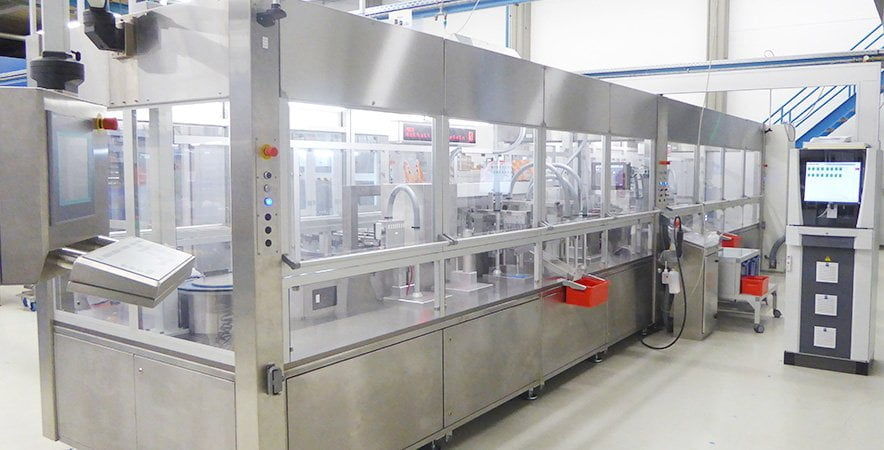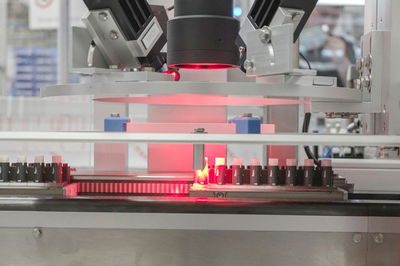Lancet drum assembly with PIA meditec®

With its meditec® linear transfer system PIA offers a system for various assembly tasks in the healthcare sector.
Outstanding demands towards patient safety and quality require an uncompromising dedication to high performance. In this context PIA was able to prove that its production methods are able to deliver at the highest levels of safety. Besides conventional customer-specific solutions PIA offers an innovative range of products for medical technology systems in the form of meditec®. These systems meet strict hygiene requirements and are the first medical technology assembly systems tested and certified for cleanroom compatibility by the Fraunhofer Institute. meditec® combines demanding assembly tasks with compact, cleanroom-compatible design and strictest demands towards documentation. These assembly systems impress with a high degree of standardization and allow for short time-to-market cycles.
One of the linear transfer system’s biggest advantages is its high manufacturing depth: Thus, the system allows for the assembly of complex assembly units with variable processing times of up to 200 cycles/min. A classic example is the assembly of lancet drums for lancing devices used for blood sugar measurements: The system loads ≤ 1,152 lancets/min. and assembles at 19 stations in an ISO class 8 cleanroom.
Want to know how this process works?
- The assembly of the drums loaded with six lancets starts with the mechanical supply of the drum bodies into the workpiece carrier nests. The drum sleeves are supplied next. Both processes are monitored for presence and height.
- After that the lancets are supplied, individualized and the drum housings are loaded with the lancets. An optical monitoring system checks whether the magazines are completely filled and loaded with correctly positioned drum sleeves.
- After that the parts are flipped by 180°. This is required to subject the sterile protector to a precise optical puncture check. A specially designed spotlight allows for the fail-safe identification of faulty parts.
- Next, the OK parts are labeled.
- Despite the fact that the field of medical technology is already subject to very high quality standards, PIA offers the possibility of inspecting quality during an intermediate step by means of free stations.
- An empty check at the last station makes sure the parts have been correctly retrieved and the workpiece carrier is completely empty.

